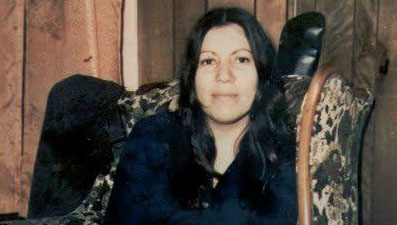Indigenous
Family of Anna Mae Aquash dismayed by Assembly of First Nations
National chief apologizes, stands by Leonard Peltier

caption
Anna Mae Pictou Aquash, a Mi'kmaq activist from Indian Brook, N.S., was murdered 40 years ago.
caption
Anna Mae Pictou Aquash, a Mi’kmaq activist from Indian Brook, N.S., was murdered 40 years ago.Forty years have passed since Anna Mae Pictou Aquash was murdered, and questions about her death still remain.
Why was she killed? Was the Federal Bureau of Investigation involved? Why did it take so long to convict someone?
Amidst the speculation, Aquash’s daughter has a question of her own: where is support from the Assembly of First Nations?
“I certainly don’t feel supported by any form of advocacy here other than our native women’s council,” said Denise Maloney Pictou.
Pictou and the Nova Scotia Native Women’s Association released a statement Tuesday calling on Perry Bellegarde, head of the AFN, to retract comments he made supporting Leonard Peltier, a man Pictou believes is linked to events surrounding her mother’s murder.
Pictou has waged a decades-long campaign for justice for her Mi’kmaq activist mother.
She says Bellegarde’s comments were especially outrageous, given the assembly’s commitment to missing and murdered indigenous women.
“[It’s] a slap in the face,” Pictou said. “I am the family of one of those victims.”
AFN stands by Peltier
In a CBC interview this week, Bellegarde appealed to Prime Minister Justin Trudeau to negotiate Peltier’s release from a U.S. prison during the prime minister’s White House visit with President Barack Obama.
Peltier, an activist with the American Indian Movement, was sentenced to life in jail in 1977 for shooting two FBI agents in South Dakota.
Bellegarde called Pictou Tuesday night to apologize for any hurt he may have caused, but stood by his position that Peltier should be free.
“The Peltier family has been living with an injustice as well,” Bellegarde told The Canadian Press in an interview.
The national chief’s views are in line with a 1999 AFN resolution that calls for the Canadian government to ask the U.S. for clemency.
Neither Bellegarde nor the assembly could be reached for further comment.
The National Congress of American Indians, Amnesty International and the Dalai Lama have come to Peltier’s cause with similar appeals.
Supporters believe Peltier did not receive a fair trial, saying prosecutors and federal investigators manufactured evidence against him.
He has even become something of a folk hero – inspiring films, songs, comic books and ‘Leonard Peltier is innocent’ T-shirts.
“They want to make him out like he’s Nelson Mandela,” said Cheryl Maloney, president of the Nova Scotia Native Women’s Association. As Aquash’s first cousin, she is invested in this issue both personally and as an advocate.
“The American Indian Movement did some good work on fighting for indigenous rights,” she said, “but the story of Leonard Peltier isn’t the story of the American Indian Movement.”
Aquash’s murder unresolved
Raised in Indian Brook, N.S., Aquash moved to the U.S. to join the native rights movement in the 1960s. In 1973, she was a part of the AIM’s 71-day occupation of Wounded Knee on South Dakota’s Pine Ridge Reservation.
The standoff between AIM and federal authorities came to a head in a shootout that left two FBI agents dead.
In 1976, Aquash’s body was discovered on the outskirts of the reservation. She had been shot at close range in the back of her head.
After decades of investigation, AIM member Arlo Looking Cloud was convicted for the murder of Aquash in 2004. A second member, John Graham, was convicted of felony murder in 2010. Peltier has publicly expressed support for both men.
In a series of court cases, the FBI has suggested that her killing was ordered by higher level members of the AIM who believed her to be an informant.
Some AIM members have speculated in the past that the FBI orchestrated her murder as a way of discrediting the movement.
“In Indian country, there’s a certain level of brotherhood that exists,” Pictou said. “People would rather believe that convicted felons were wrongly done by than admit the possibility that they could be involved in a murder.”
Daughters left behind
Pictou says that an “old boys’ club” mentality still exists in the indigenous community. “The misogynistic view of our women doesn’t stop at the borders of our reserves.”
While Bellegarde’s support for Peltier only made headlines this week, Pictou says she’s been dealing with similar comments behind the scenes for at least 16 years.
“I feel like I’m being targeted as an hysterical woman who has an axe to grind,” she said. “[This is] about my mother’s justice, and other women’s justice, and being able to be heard.”
As an advocate for native women, Maloney says Bellegarde’s timing was particularly insensitive – the night before International Women’s Day.
“What is unjust for Anna Mae is when the national leadership in her country abandons her family … on the eve of a national inquiry.”
The federal inquiry into missing and murdered indigenous women will investigate the approximately 1,200 aboriginal women and girls who, according to the RCMP, went missing or were murdered over 30 years.
“She was ours,” Maloney said. “If she had lived the past 40 years, she’d be leading us.”
When Maloney heard about Bellegarde’s interview, she was driving home from the funeral of a young Mi’kmaq woman from the streets of Sydney who was the mother of two young children.
“I was leaving a funeral where these two young girls were left behind,” Maloney said. “And after all of these years, we’re dealing with Anna Mae still and her two daughters that were left behind then.”


K
Katherine Williams
M
Mike
t
tovangar
L
Lionel Kitpu'see Pinn